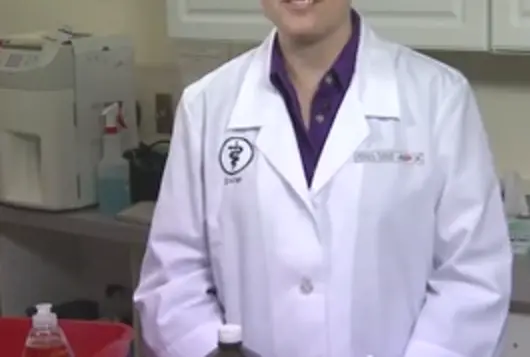Treating Snake Bites in Pets
In the US, it’s estimated that there may be more than 100,000 venomous snakebites that occur in dogs and cats every year with a mortality rate of 1 percent to as high as 30 percent, depending on the size of the pet, the species of the snake, and the location of the bite.
Snake Types and Characteristics
There are four different types of venomous snakes in the United States:
-
Coral snakes
-
Water moccasins
-
Copperheads
-
Rattlesnakes
Except for coral snakes, all are considered “pit vipers.” Pit vipers are in the Viperidae family and can be recognized by the following characteristics:
-
Vertical, slit-like pupils (most non-venomous snakes have round pupils)
-
Triangular head (non-venomous snakes can flatten their heads making them look more triangular)
-
Facial pits between their eyes and nostrils used to sense heat
-
Big, fat bodies
Coral Snakes
Coral snakes can be found in southern coastal areas from North Carolina to Louisiana, including all of Florida; separate species can be found in Texas, Louisiana, Arkansas, and Arizona. While they have one of the most potent venoms of any North American snake, they are reclusive. Only around 15 to 25 human bites occur each year. Coral snakes are easily identified by their colorful red, yellow/white, and black colored bands.

Coral Snake
Coral snakes are members of the Elapidae family. The venom is a highly potent neurotoxin. It is spread through the lymphatic system causing neurotoxicity and respiratory muscle weakness. Coral snake venoms are complex mixtures that include phospholipase A2, multiple proteases, high–molecular-weight protein, and several neurotoxins. Phospholipase A2 is found in various isoforms that cause neuromuscular paralysis, hemorrhage, myonecrosis, edema, widespread inflammation, and platelet aggregation. Most of the neurotoxins are alpha-toxins, which antagonize postsynaptic acetylcholine receptors at the neuromuscular junction.
There is an antivenin available for humans, but no antivenin has been developed for dogs. Treatment is symptomatic and supportive. Because dogs can develop apnea, their respiratory rate must be closely monitored and dogs who become apneic will need mechanical ventilation.

Water Moccasin aka Cottonmouth
Water Moccasins (Cottonmouths)
Water moccasins (aka cottonmouths) are members of the Agkistrodon genus and can be found in the southeastern United States from southern Virginia and Florida to eastern Texas. They are often seen basking on logs and stones near swamps, marshes, drainage ditches, and ponds and have a reputation for being aggressive. Water moccasins are often confused with non-venomous water snakes.
Copperheads
Also a member of the Agkistrodon genus, Copperheads have the weakest venom and are responsible for the most bites in people and can be found in many different habitats including suburban areas from southern New England to West Texas. They have distinct hourglass-shaped crossbands on their bodies and will vibrate their tails rapidly to imitate a rattle.

Copperhead
Agkistrodon venom is extremely cytotoxic and proteolytic, causing tissue destruction along with pain, bruising, and swelling. Application of a pressure bandage is not advised, as it may lead to more severe local tissue damage. Treatment consists of supportive care and use of antivenin as needed. The two products available in the US which are specifically made to counteract Agkistrodon venom are CroFab (Crotalidae Polyvalent Immune FAB) and Rattler Antivenin.
Pit viper venoms are also very complex and can vary by species, region, and even from snake to snake. The main components include hyaluronidase (cleaves hyaluronic acid in collagen to help the venom spread), myotoxins (destroy muscle), phospholipase A (ruptures myofibrils), hemorrhagic toxins, metalloproteinases, myocardial depressants factors, and kallikrein-like activity (local pain, systemic hypotension).
Water Moccasin venom is more toxic than Copperhead venom, although neither is as problematic as rattlesnake venom.
Rattlesnakes
The group of snakes referred to as “rattlesnakes” are members of the Crotalus genus.

Rattlesnake
Rattlesnakes are the largest of the venomous snakes found in the US and can strike one-third or more of their body length. Rattlesnakes are found throughout the country, though most found in the West, in a variety of habitats, including mountains, prairies, deserts, and beaches. The Western Diamondback Rattlesnake is considered the most dangerous species of rattlesnake and causes the most fatalities in people annually.
Snakes in the Crotalus genus are the most encountered venomous snakes in the United States. Rattlesnake venom is a mixture of enzymes and proteins that in general are hemotoxic and proteolytic. Localized tissue damage, coagulopathies, hypotension, and shock are commonly observed. Mojave rattlesnakes have a neurotoxin component which causes rapid paralysis, and death is generally from respiratory paralysis. Treatment is supportive; IV fluids maintain blood pressure, pain control and antivenin. There are many available antivenin products in the US that will treat Crotalus envenomation. If a bite by a Mojave rattlesnake is known or suspected, the most effective antivenin products will be CroFab and Rattler.
Snake-Bite Prognosis in Pets
Most pets will recover with prompt and appropriate treatment, but snake bites can be fatal. There are higher fatality rates for dogs who are bitten on the tongue or the chest and for pets who have a long delay between the time of the bite and treatment by a veterinarian.
We have lots more on this subject:



